
Eising/Photodisc/Getty Images
Of the three commercially available grades of beef, a steak labeled USDA Select contains the least amount of fat, and what fat it contains is usually located on the outside edges. USDA Choice is the next in line, exhibiting thin slivers of fat between the meat fibers, and USDA Prime grade rounds out the trio with steaks that are heavily streaked, or marbled, with fat.
Cooking Methods
While a prime or choice steak can be cooked quickly in a very hot pan with little or no fat, a select steak taken from a lean beef cut requires a different treatment, as pan-broiling toughens the meat. When cooking a select steak, use the braising method that involves searing the meat on high heat and finishing it in a small amount of liquid over a lower flame. For grilling purposes, marinating the steak helps to break down and tenderize its leaner fibers and extracts more of the moisture hidden deep within them.
The Grading System
Meat processors look for fat when grading beef, and the more they find mixed in with the meat fibers, the more tender and juicy the steak will be when cooked. Grading applies to all cuts of beef, from the tougher fribrous steaks found near the cow's front legs and the equally lean round steaks that exhibit hardly any fat at all through the lean meat. The grading process works in tandem with the cut classification system to inform consumers about what they are buying.
Buyer Beware
For obvious reasons, the highest grade of beef is more expensive, and it is usually not commonly found in supermarkets. You're more likely to find choice and select grades, and if you're unsure as to what you're buying, talk to the butcher. Lacking that, look for the USDA seal on the meat packaging label, which assures the honesty of the grade. Otherwise, the grade classification may simply have been imposed by the individual retailer, and may not be accurate, which could end up costing you more for what is actually a cheap cut of beef.
Braising and Marinating
You can go ahead and dry-sear that select rib-eye steak in a smoking hot pan, as it contains enough fat to render it juicy, tender and flavorful. The select top round steak, however, will be tough and tasteless if you cook it that way, so your best bet is to marinate it in a salty liquid such as soy sauce or Worcestershire sauce. According to Modern Farmer, the salt helps to break down the meat fibers and draw out their moisture; and the glutamate, or amino acids, in the sauce bring out the steak's meaty flavor. Braise a less tender cut of select steak by cooking it quickly on both sides in hot fat, then reducing the heat and cooking it for a few more minutes in a little water, wine or beef stock. Be sure it registers an internal temperature of at least 130 degrees Fahrenheit before serving.
Related Articles

How to Choose a Ribeye Steak

Choice Vs. Prime Beef Grades

Do Filet Mignon Steaks Come From Female ...
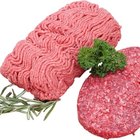
What Cuts of Meat Are Used for Ground ...

What Is a Chateau Cut?
The Differences Between Prime & Dry ...
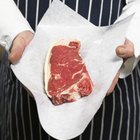
Tenderloin Filet Vs. Top Sirloin

Different Cuts of Steak

The Best Way to Cook a Silverside
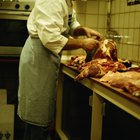
Cuts of Meat From a Front Quarter of ...

How to Make a Blackbuck Antelope Roast
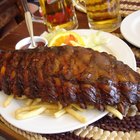
How to Buy the Best Spare Ribs at the ...

What Part of Beef Is Kosher?

How to Cook a Large Amount of Corned ...
How to Cook Buffalo Fillet

Does a Rib Eye Have a Filet in It?
How to Cook Sirloin Filets in a Pan and ...

How to Cook Deer Sirloin
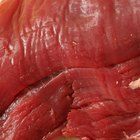
How to Trim and Tie a Beef Tenderloin

How to Cook London Broil
References
Writer Bio
Rachel Lovejoy has been writing professionally since 1990 and currently writes a weekly column entitled "From the Urban Wilderness" for the Journal Tribune in Biddeford, Maine, as well as short novellas for Amazon Kindle. Lovejoy graduated from the University of Southern Maine in 1996 with a Bachelor of Arts in English.
Photo Credits
Eising/Photodisc/Getty Images